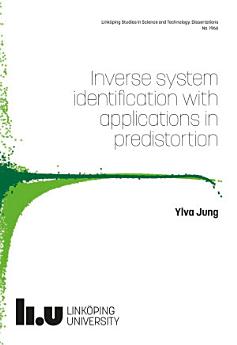Inverse system identification with applications in predistortion
Giới thiệu về sách điện tử này
Power amplifiers (PAs) used in communication devices can be nonlinear, and this causes interference in adjacent transmitting channels. A prefilter, called predistorter, can be used to invert the effects of the PA, such that the combination of predistorter and PA reconstructs an amplified version of the input signal. In this thesis, the predistortion problem has been investigated for outphasing power amplifiers, where the input signal is decomposed into two branches that are amplified separately by highly efficient nonlinear amplifiers and then recombined. We have formulated a model structure describing the imperfections in an outphasing abbrPA and the matching ideal predistorter. The predistorter can be estimated from measured data in different ways. Here, the initially nonconvex optimization problem has been developed into a convex problem. The predistorters have been evaluated in measurements.
The goal with the inverse models in this thesis is to use them in cascade with the systems to reconstruct the original input. It is shown that the problems of identifying a model of a preinverse and a postinverse are fundamentally different. It turns out that the true inverse is not necessarily the best one when noise is present, and that other models and structures can lead to better inversion results.
To construct a predistorter (for a PA, for example), a model of the inverse is used, and different methods can be used for the estimation. One common method is to estimate a postinverse, and then using it as a preinverse, making it straightforward to try out different model structures. Another is to construct a model of the system and then use it to estimate a preinverse in a second step. This method identifies the inverse in the setup it will be used, but leads to a complicated optimization problem. A third option is to model the forward system and then invert it. This method can be understood using standard identification theory in contrast to the ones above, but the model is tuned for the forward system, not the inverse. Models obtained using the various methods capture different properties of the system, and a more detailed analysis of the methods is presented for linear time-invariant systems and linear approximations of block-oriented systems. The theory is also illustrated in examples.
When a preinverse is used, the input to the system will be changed, and typically the input data will be different than the original input. This is why the estimation of preinverses is more complicated than for postinverses, and one set of experimental data is not enough. Here, we have shown that identifying a preinverse in series with the system in repeated experiments can improve the inversion performance.




